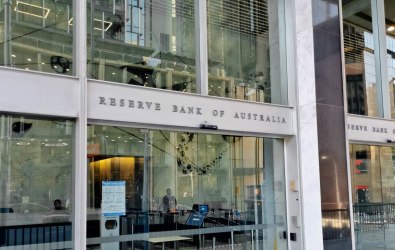The brakes are being pulled on emerging Asian economies, with capital flowing out of the region in recent times as worried investors sell assets amid the mounting economic problems in Europe and the United States.
Commodity prices lost significant value in September and asset prices highly leveraged to growth also lost value. Asian equities and currencies, in particular, were sold down in late September and early October, along with higher risk assets such as the Australian dollar.
According to new research from Westpac, the capital outpouring signalled tougher times ahead.
"The [emerging Asian] region is in the midst of its first real growth setback since the dark days of the global financial crisis. Regional currencies fell sharply against the US dollar in late September and Westpac now expects rate cuts across the region in early 2012," the bank said in its October Asian Market Perspectives publication.
"Since September, economic activity has remained suppressed and an additional drag on economic growth has come to the fore in October: capital outflow. Regional currencies fell sharply against the US dollar in late September, with the ADXY, a weighted index of non-Japan Asian exchange rates, having its worst fortnight since January 2009.
"The withdrawal of capital from the region is an admission that, for now, global investors have a vastly diminished appetite for growth trades - and for good reason.
"With circumstances deteriorating swiftly we have decided to put rate cuts on the regional agenda for early 2012."
Westpac said it expected growth in emerging Asian economies to slow to 4 per cent in 2012 from 5 per cent in 2011 and a high of 7.1 per cent in 2007, before the global financial crisis took struck. Those forecasts cover developing countries such as Indonesia, Malaysia and Thailand, but exclude industrialised or newly-industrialised East Asian economies such as China, Japan and Hong Kong.
Those growth predications compare to 8.2 per cent growth for China in 2012, slowing from 9.3 per cent in 2011 and a high of 14.2 per cent in 2007.
Westpac's predications are sombre compared to those recently published by the International Monetary Fund (IMF). In September, the IMF downgraded growth forecasts for emerging Asian economies to 8.2 per cent in 2011 and 8 per cent in 2012, versus June forecasts of 8.4 per cent for 2011 and 2012.
While growth remains strong in emerging Asia, "it is moderating with emerging capacity constraints and weaker external demand", it said.
"Downdrafts from weaker activity in major advanced economies suggest that a pause in the policy tightening cycle may be warranted for some economies."
China's 2012 growth estimate was cut to 9 per cent from 8.5 per cent, reflecting weaker export demand for its goods.
Westpac said China's slowing had already begun.
"Our eye has recently been drawn to the weakness in regional air freight activity, sharp falls in the manufacturing surveys for Korea and Taiwan, contracting activity in the electronics sector in Singapore and negative readings in the global leading indicators of the tech cycle. Each bodes ill for the processing and assembly trade that keeps the wheels of the [China] export complex spinning," it said.





